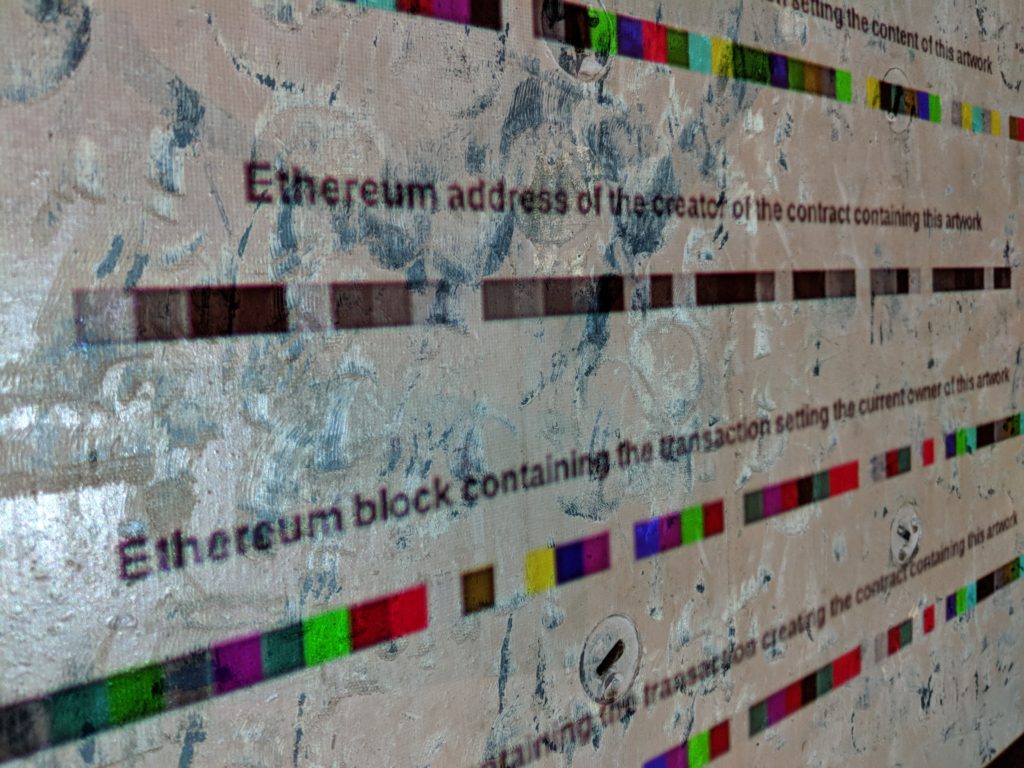The “AI” used by current “AI Art” is machine learning – recursive neural networks or linear regression if you want to deflate it. These algorithms are not “artists”, they are tools or faculties. Harold Cohen’s long-running AARON project, software written under the previous AI paradigm of “expert systems” was an apprentice or studio assistant. Its use of explicit written rules also makes it a form of discourse. Machine learning could be used to produce digital muses but for the most part AI inflates menial work rather than deflating the status of the artist or their inspiration.
Appropriating a GAN is appropriation art and, ignoring the legal status of appropriation art and the political question of who-appropriates-whom, can be evaluated as such. Appropriating kitsch or canonical high art is a critical move. The critical value of appropriating the art of peers is less clear. Art GANs have at least a claim to the status of art or artistic materials. The producers of it have at least a claim to the status of artists. To treat the products of the GAN as found objects and the GAN’s algorithm as their author is a conceptually provocative move but its precedents lie in the erasure of skilled labour in the work of Koons and Kostabi.
GANs produce pastiches and AST produces interpretations. These are robust art historical categories and are hardly unprecedented. Art that falls into these categories should not be fetishised or rejected based merely on a misapprehension of novelty.
An AI-generated pastiche is of something that (almost certainly) does not exist. This non-existence may consist in several senses:
- The image produced does not exist in the training set.
- The image produced does not exist in the oeuvre, genre, movement or medium that the training set draws from.
- The image did not previously exist and exists only as this image. This is trivial compared to the other senses but it the sense of existence usually meant.
- The entities depicted by the image do not exist in reality.
- The entities depicted by the image have never existed in the arrangement or event depicted.
An AI-generated interpretation is of something that (almost certainly) does not look like that interpretation.
- Where the interpretation is of photographic imagery (in the last moment of its popular acceptance as a mechanical capturing of reality) the results will not resemble it due to the imposition of the distortions and modulations of artistic style.
- Where the interpretation is of one artist’s work in the style of another, the results will not stylistically resemble the source work. This is trivial but it usefully illustrates the level at whist AST operates.
At the level of content the introduction, removal, or alteration of subjects and themes is approached more by Deep Dream’s “puppyslugs” than by other contemporary methods. Even then it is a Surrealist’s idees fixes that intrude from the AI’s “subconscious” into every image rather than a freer or more reflective play of concepts and influences.
The current tools of AI art fit neatly into the history of artistic tools and art theory but begin to problematize them.
- Historical styles being competently revived may no longer simply be forgery or quotation.
- Influence (and at the level of law, copyright infringement) becomes both mechanically explicit and operationally diffuse.
- The impact of AI on art is an automation of production, replacing manufacturing jobs the same as in other industries.
- The opacity of artist’s explanations of the construction of their work is doubled, as the artist is now using tools that perform actions for reasons that may be opaque to them.
The technology used in contemporary AI art is that which threatens democracy with facial recognition and deep fake images, video and text. Its explanatory opacity (why does the image look like this, which exact sources did it draw on, etc.) can be addressed by the same systems that are being developed to address the need to explain the operation of algorithms within corporations, law enforcement and other powerful organizations if they are to remain accountable. So this entanglement can be critically and politically positive where it is acknowledged and explored.
Current AI art works at the level of style, in the shallows of form. To extend their reach through the realm of form more profoundly and into subject and content is possible with current tools should we choose to do so. This may require more complex pipelines of generation, classification and search but these can be constructed within the same frameworks that current systems are.
The operation of GANs tends to produce art with a compositional scheme of all-overness, for the composition as a whole and for any object (rarely objects) within it. This has a deconstructive effect, deterritorializing an image corpus and reterritorializing it in novel compositions that find new local maxima in the dissolved state space of the corpus’s images. These images are latent in the corpus, generated from within it but lying outside of it. The local sense but global nonsense of markov chains and dreams. The challenge of a new metastability, but only of a new metastability.
Now, about AI curation, collection and critique…
(With thanks to Cynthia Gayton and Seryna Myers.)



































You must be logged in to post a comment.